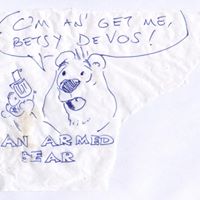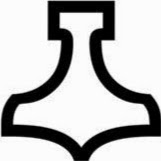Charles Erwin Pierson
age ~73
from Syracuse, NY
- Also known as:
-
- Charles E Pierson
- Charles C Pierson
- Charles Douglas
- Chris Pierson
Charles Pierson Phones & Addresses
- Syracuse, NY
- Prattsburgh, NY
- Canandaigua, NY
- Bath, NY
- Manchester, NY
- Myrtle Beach, SC
- Rushville, NY
- Auburn, WA
- Waverly, NY
License Records
Charles M Pierson
License #:
9938539 - Expired
Issued Date:
May 26, 2015
Renew Date:
May 26, 2015
Type:
Electrical Apprentice
Us Patents
-
Apparatus For Holding Solid Compact Medicaments During Coating Processing
view source -
US Patent:55142168, May 7, 1996
-
Filed:Jul 7, 1993
-
Appl. No.:8/088500
-
Inventors:Peter A. Pastecki - Rochester NY
Thomas C. Reiter - Rochester NY
Charles W. Pierson - Rochester NY -
Assignee:Bayer Corporation (formerly Miles, Inc.) - Parsippany NJ
-
International Classification:B05C 1302
-
US Classification:118503
-
Abstract:An apparatus for holding and subsequently releasing a solid compact medicament, such as a caplet. The apparatus has a first and a second member each having an upper and a lower surface. The first and second members each have at least one notch opposed to each other and correspondingly aligned and extending beyond the respective upper and lower surfaces of each member. The first and second members have chambers adjacent to each of the notches, and each of the notches is moveable in the respective chamber of the opposing member so that the opposing notches form a gripping jaw that can move between a first and a second position. When the gripping jaw is in an open first position, it can receive a solid compact medicament, and in a closed second position, the gripping jaw can grip the medicament.
-
Ultrasonic Securing Method
view source -
US Patent:48656879, Sep 12, 1989
-
Filed:Dec 23, 1988
-
Appl. No.:7/288900
-
Inventors:Charles W. Pierson - Rochester NY
-
Assignee:Eastman Kodak Company - Rochester NY
-
International Classification:B29C 6508
-
US Classification:156 731
-
Abstract:A method for securing first and second parts together via a spheroid, wherein the first part has a hole in it slightly smaller than the spheroid while the second part and spheroid each include ultrasonically fusible material. The method comprises placing the first part against the second part, placing the spheroid into the hole in the first part so that a portion of the spheroid extends through the hole and into contact with a portion of the second part, placing a concentrating horn of an ultrasonic power source in contact with the spheroid, and ultrasonically vibrating the horn to beat it against the spheroid and thus impart ultrasonic energy to both the spheroid and the second part, thereby heat-softening the spheroid and second part and causing the spheroid material to flow through the hole, fuse with the second part material, and overlap an adjacent portion of the first part, whereby the two parts, via the spheroid, are firmly secured together.
-
Method Of Making A Device For Determining Analyte Activity
view source -
US Patent:44682719, Aug 28, 1984
-
Filed:Oct 28, 1982
-
Appl. No.:6/437221
-
Inventors:Charles W. Pierson - Rochester NY
-
Assignee:Eastman Kodak Company - Rochester NY
-
International Classification:B32B 3118
B32B 3120
G01N 2730 -
US Classification:156220
-
Abstract:A device is disclosed for determining the ionic analyte activity in liquids, e. g. aqueous solutions, by the use of electrodes and an internal capillary bridge which promotes ionic migration between the electrodes. This device includes an electrically insulative frame in which the electrodes are mounted, liquid access holes aligned with the electrodes on a capillary bridge formed of a porous material, and a cover sheet element formed of a nonporous cover sheet. The cover sheet element extends over the electrodes and encapsulates the elongated capillary bridge. Located in the cover sheet directly over and generally along the capillary bridge is one or more substantially continuous stretch lines typically provided by mechanically deforming the cover sheet. This deformation allows shorter junction times when liquids are introduced into the liquid access holes.
-
Ultrasonic Securing System
view source -
US Patent:48656801, Sep 12, 1989
-
Filed:Dec 23, 1988
-
Appl. No.:7/288936
-
Inventors:Charles W. Pierson - Rochester NY
-
Assignee:Eastman Kodak Company - Rochester NY
-
International Classification:B29C 6508
-
US Classification:1565802
-
Abstract:A system for securing first and second parts together via a spheroid, wherein the first part has an aperture slightly smaller than the spheroid while the second part and spheroid each include ultrasonically fusible material. The system comprises means for supporting the two parts in superposed relation so that the aperture in the first part overlies a portion of the second part, means containing the spheroid among a plurality thereof, and means including a concentrating horn for applying ultrasonic energy to the spheroid, the horn having a tip provided with a hemispherical depression connected to a source of vacuum for receiving and releasably retaining the spheroid. The system also comprises means for moving the horn from the containing means, where the tip receives and retains the spheroid, to the parts-supporting means, where the tip deposits and releases the spheroid in the aperture so that a portion of the spheroid extends therethrough into contact with the underlying portion of the second part. The system further comprises means for activating the horn to ultrasonically vibrate its tip against the spheroid and thus impart ultrasonic energy to both the spheroid and the underlying second part, thereby heat-softening the spheroid and second part and causing the spheroid material to flow through the aperture, fuse with the second part material, and overlap an adjacent portion of the first part, whereby the two parts, via the spheroid, are firmly secured together.
-
Leader-Retracting Film Magazine And Method For Enclosing Film
view source -
US Patent:49555553, Sep 11, 1990
-
Filed:Oct 31, 1983
-
Appl. No.:6/547310
-
Inventors:Charles W. Pierson - Rochester NY
Frederick F. Tone - Holley NY -
Assignee:Eastman Kodak Company - Rochester NY
-
International Classification:B65H 7528
-
US Classification:242 74
-
Abstract:A film magazine is disclosed which comprises a light-tight casing and a spool rotatable therein. A leader has one end attached to the spool and extends outside the casing for splicing to light-sensitive film. The splice is retracted into the casing during spooling operations, and means are provided to prevent the splice between the film and the leader from being pulled from the magazine.
-
Device For Determining Ionic Analyte Activity
view source -
US Patent:45564744, Dec 3, 1985
-
Filed:Jul 5, 1984
-
Appl. No.:6/605339
-
Inventors:Charles W. Pierson - Rochester NY
-
Assignee:Eastman Kodak Company - Rochester NY
-
International Classification:G01N 2730
-
US Classification:204416
-
Abstract:A device is disclosed for determining the ionic analyte activity in liquids, e. g. aqueous solutions, by the use of electrodes and an internal capillary bridge which promotes ionic migration between the electrodes. This device includes an electrically insulative frame in which the electrodes are mounted, liquid access holes aligned with the electrodes on a capillary bridge formed of a porous material, and a cover sheet element formed of a nonporous cover sheet. The cover sheet element extends over the electrodes and encapsulates the elongated capillary bridge. Located in the cover sheet directly over and generally along the capillary bridge is one or more substantially continuous stretch lines typically provided by mechanically deforming the cover sheet. This deformation allows shorter junction times when liquids are introduced into the liquid access holes.
-
Spliced Web And Method For Forming A Splice
view source -
US Patent:43989829, Aug 16, 1983
-
Filed:Dec 2, 1981
-
Appl. No.:6/326791
-
Inventors:Peter C. Witerski - Rochester NY
Charles W. Pierson - Rochester NY -
Assignee:Eastman Kodak Company - Rochester NY
-
International Classification:B65H 6902
B65H 6906 -
US Classification:156157
-
Abstract:A spliced web and method for splicing web end portions together for minimizing splice-induced disturbance of a liquid composition continuously coated onto the face side of the spliced web during a coating operation. Splicing strips are applied overlying the face and opposite sides of the web end portions to form a sandwich, and the sandwich is subjected to heat and pressure. The splicing strip on the face side fuses with and impregnates the web end portions and forms slight trailing and leading ramp surfaces of gradually decreasing thickness which blend smoothly with the face side of the web for minimizing coating disturbances. The other splicing strip contains fibers which are embedded into or adhere to the opposite side of the web end portions to provide tensile strength to the spliced web.
-
Apparatus For Holding Solid Compact Medicaments During Processing
view source -
US Patent:53912306, Feb 21, 1995
-
Filed:Jul 7, 1993
-
Appl. No.:8/088467
-
Inventors:Peter A. Pastecki - Rochester NY
Thomas C. Reiter - Hilton NY
Charles W. Pierson - Rochester NY -
Assignee:Eastman Kodak Company - Rochester NY
-
International Classification:B05C 1300
B25B 120
B23Q 300
A61K 900 -
US Classification:118503
-
Abstract:An apparatus for capturing and holding a solid compact medicament, such as a caplet, has first, second and third members each having a surface having at least one throughole therein. Througholes have a diameter somewhat greater than the thickness of the solid compact medicament and the interior wall of the througholes 1as an axial length smaller than the length of the solid compact medicament. First and third members are fixed relative to one another. Second member is displaceable between first and third members between a first position wherein the througholes in members are aligned thereby defining an open gripping jaw for receiving and subsequently releasing the solid compact medicament, to a second position wherein the second member firmly engages a circumferential portion of solid compact medicament thereby engagingly capturing solid compact medicament in partially closed gripping jaw for processing.
Medicine Doctors

Charles Byron Pierson
view sourceSpecialties:
Family Medicine
General Practice
General Practice
Education:
University of Michigan Medical School (1968)

Charles Pierson
view source
Charles Pierson
view source
Charles Pierson
view source
Charles Pierson
view source
Charles Pierson
view source
Charles Pierson
view source
Charles Pierson
view source
Charles Pierson
view sourceFlickr
Plaxo

Charles Pierson
view sourceHouston, TX
Googleplus

Charles Pierson

Charles Pierson

Charles Pierson

Charles Pierson

Charles Pierson

Charles Pierson

Charles Pierson
Youtube
Classmates

Charles Pierson
view sourceSchools:
David Crockett High School Jonesborough TN 1973-1977
Community:
George Mauk, David Austin, Leeann Hancock

Charles Pierson
view sourceSchools:
Carteret Middle School Carteret NJ 1999-2003

Charles Pierson
view sourceSchools:
Independence High School Independence LA 1989-1993
Community:
Larry Touchet, Gypsy Wijk

Charles Pierson (Same)
view sourceSchools:
Mineola High School Mineola TX 1949-1953
Community:
Kathy Burns, William Conner

Charles Pierson
view sourceSchools:
Griffin High School Griffin GA 1998-2002

Charles Pierson
view sourceSchools:
Mount Vernon Elementary School Newark NJ 1987-1991, Burnet Middle School Union NJ 1991-1992
Community:
Quiana Curry, Quinten Ford, Salvatore Defranco, Henry Szyarto

Charles Pierson
view sourceSchools:
Western High School Silver City NM 1958-1962
Community:
Jean Arthur, Bill Adler, Cruz Perez, Linda Stearman

Charles Pierson
view sourceSchools:
Marquette High School Yakima WA 1953-1957
Community:
Jim Maissen, James Coe, Patrick Kinzel
Get Report for Charles Erwin Pierson from Syracuse, NY, age ~73













